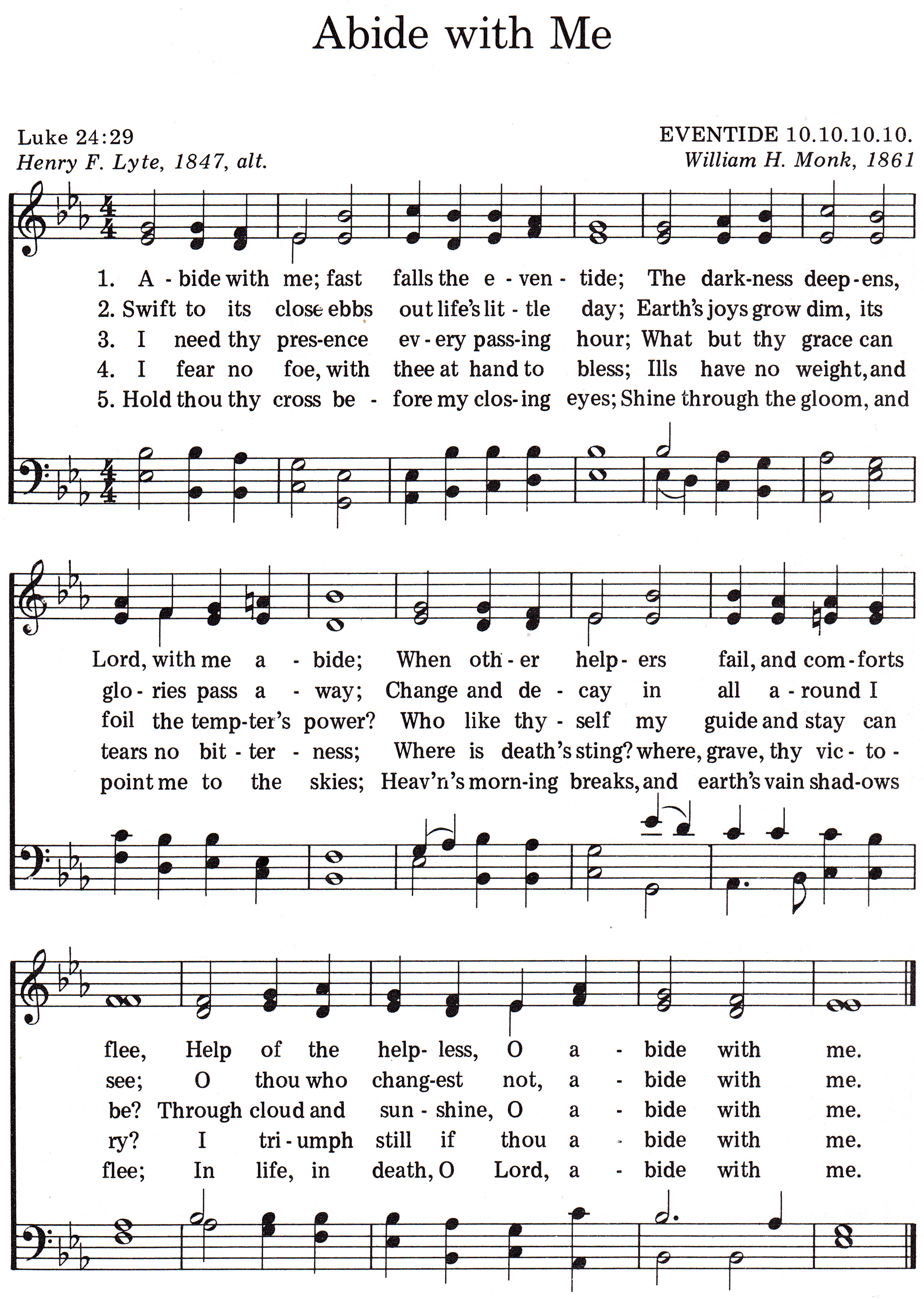
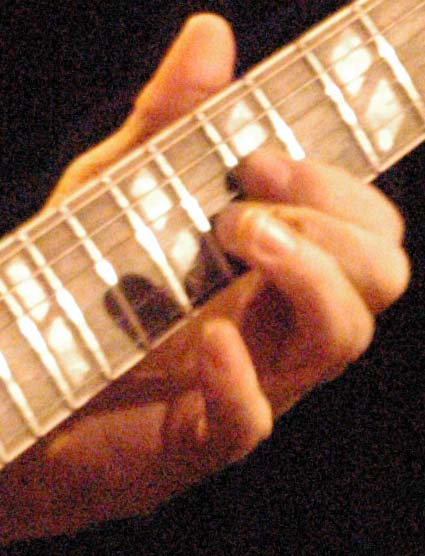
Howdy folks!
Welcome to this month’s column. This is the second installment in the series on arranging. If you missed the first installment, go
here to catch up.
Okay, so now let's look at a couple classic hymns to see how early worship songs were put together. Hymns are a great resource because they are a window into how
people viewed worship in the past. We can learn from them because there were fewer distractions than exist today. These distractions tend to clutter our minds
and our hearts with empty and meaningless chattel and garbage that interferes with our ability to quiet our mind, heart and spirit during our time of personal
and corporate worship.
The result was nothing short of amazing. Over the course of about three hundred years (1600 to 1900), and through the First and Second Great Awakening in America,
an incredible and deeply spiritually rooted variety songs came to life. Today's worship song writers could learn a lot from these songs. And to be fair, you can
tell who among the current crop did learn from them.
Music composers back then also tended to be schooled in music as part of their greater education. It wasn't an elective in school. It was a fully integrated part of
their curriculum; and was one instance where a separate teacher, an orchestral conductor or maestro on a given instrument, would come in specifically for that
discipline.
Additionally, hymns that date back to the nineteenth century and earlier are now in public domain. You don't need to pay any royalties or fees for the use of these
tunes. And many of them are really great songs to adapt to a contemporary worship service, as long as you retain the original intent and melodic elements, as well as
the message, the lyrics!
You may be in a church that has a more traditional service with less emphasis on the contemporary, or a blending of the two music forms. This is very often the case.
If I am leading worship in a church with a broad cross section of attendees, I will seek to include at least one traditional hymn, often performed with a respect
to the original authors and their great compositional skills. I will only contemporize the song through instrumentation, not a total rewrite or rearranging of the
overall structure of the song.
The first tune is "Abide With Me"; words by Henry F. Lyte in approximately 1847, music composed by Wm. Monk about 1861.

In this tune, we see that the "chorus" refrain is the "tag line" at the end of each verse. What makes this particular form work so well is the chorus refrain is more
appealing in that it is not a constant droning repeated figure. It becomes the exclamation point at the end of each of the five major themes each verse covers,
reminding us that our appeal is to God to not abandon us even in the midst of our troubles. If we had to "assign" a chorus to this song, it would be the very first
verse of the tune, wherein is repeated the refrain, "Abide with me..."
If you were to learn this song as written above, it is in E♭ Major (3 flats), and the main melody is the top note of the chord harmonies on the treble clef.
In adapting this to the guitar, we can move the key up one half step to E Major, simplifying the performance. Below is the first verse to give you an idea how you
might work this out. If the key is too low, you can use a capo to raise the pitch, yet still retain the chord forms employed... the easiest form of transposition
(which we'll get into later).
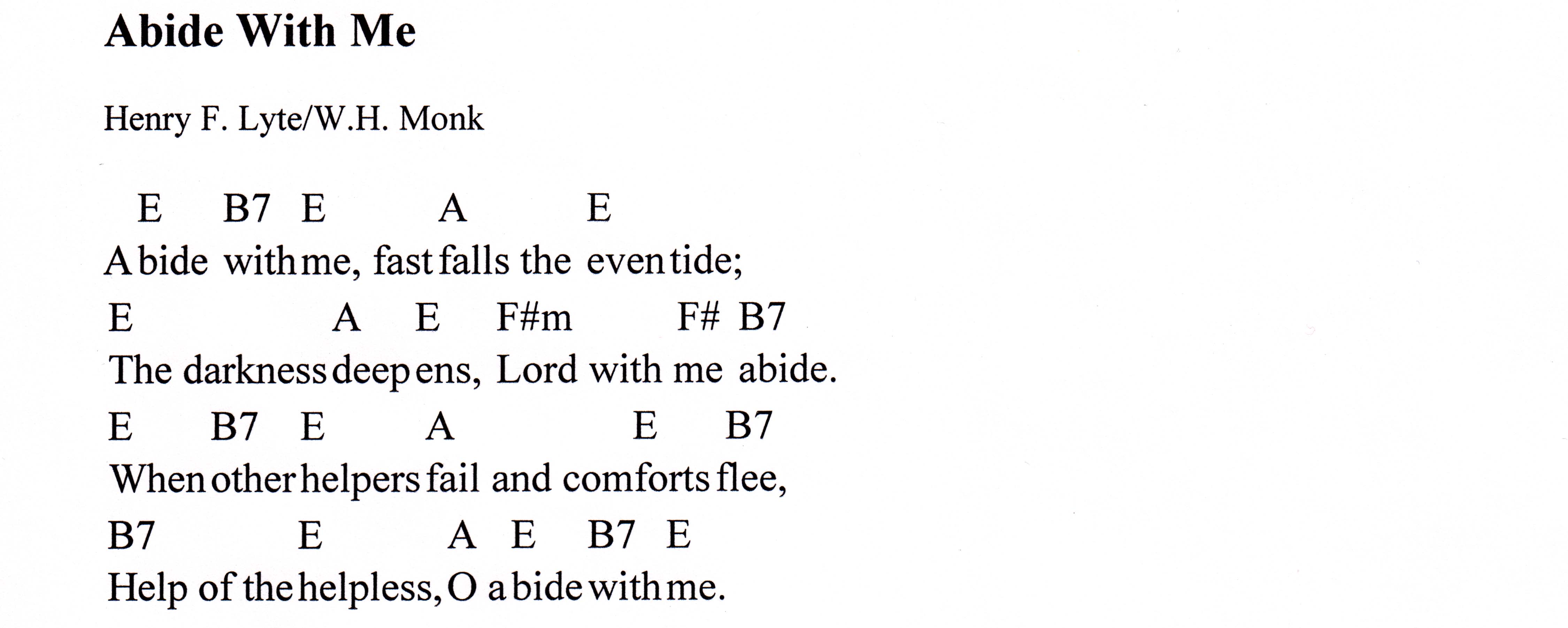
It takes time to learn to transpose songs from piano music to guitar; you have to know how to read music. But with the help of your keyboard player, they can get you
up and running in no time because they'll know the notes, and so the chords being played.
Let's move to another gem of a hymn, called "It Is Well (With My Soul)". The words were written by Horatio Spafford in about 1873; the music was added by Philip Bliss
in about 1876. Check it out...
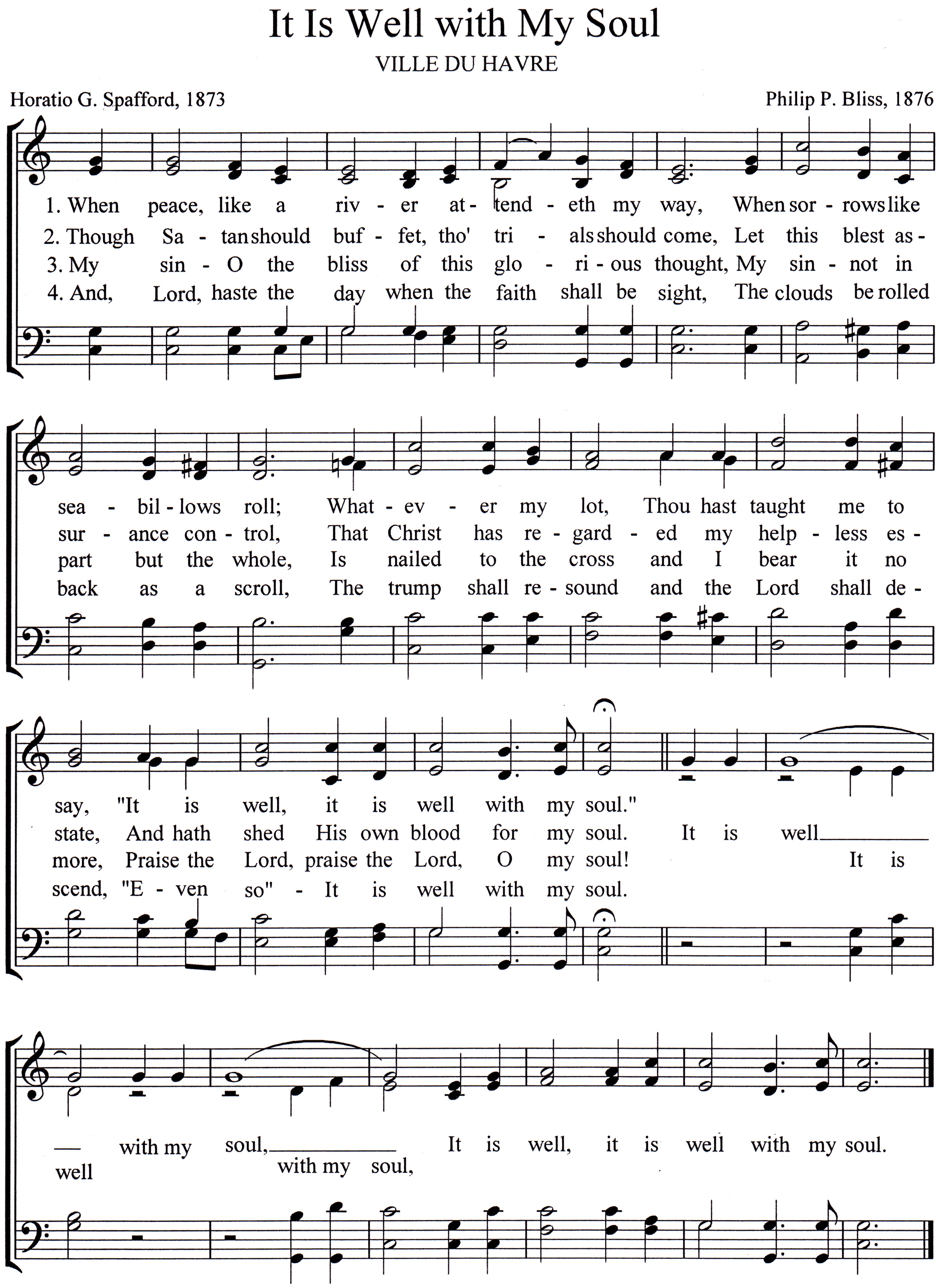
Here we have the more familiar Verse - Chorus format. This one is interesting because it has a "call - response" in the chorus, which also creates a harmony when
done correctly. Again, the top note of the chord forms in the treble clef is the melody of the tune.
This song is in the key of C Major (no sharps or flats), so is pretty easy to plot out for guitar. Below is a snapshot of the first verse and the chorus.
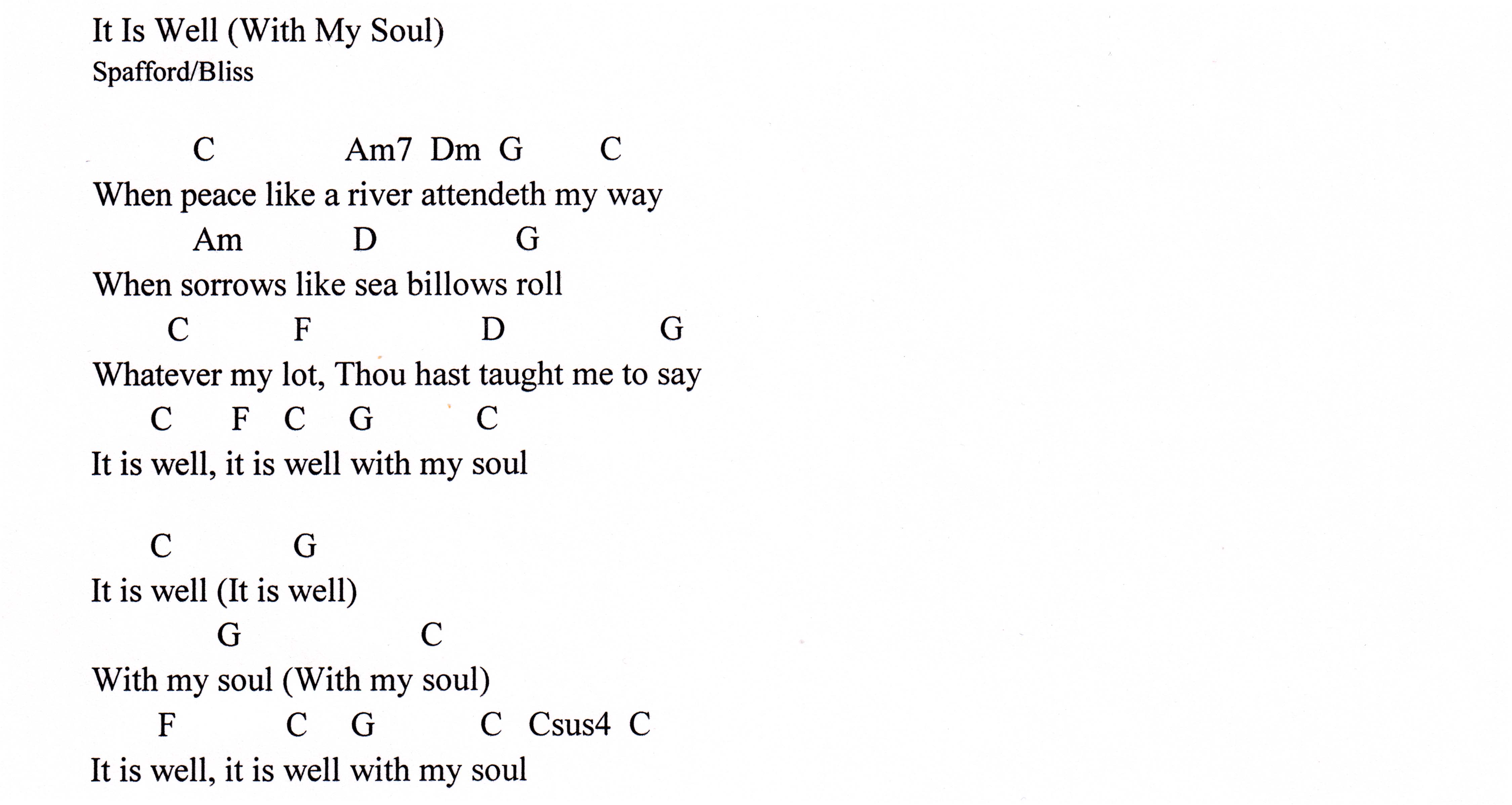
Again, if the song is too deep for your voice, you can use a capo to raise the pitch while retaining the same chord forms.
These are but two examples of well crafted songs of worship, and do lend themselves to the contemporary service. Any song when done with heart and conviction will
win over people to begin liking the old tunes again. And to be clear, these songs should not be forgotten simply because a new crop of composers has arisen. In many
ways these old hymns contain a lot more biblically based writing than the new stuff, and they are most certainly more "God centered" in their content.
Next time we'll cover the topic of genuine transposition, not just using a capo. And we'll do it with these two songs just to keep things consistent. Be ready to
learn a little music theory because you can't do transposition without it!
Until next time, keep making a joyous noise for the Lord.